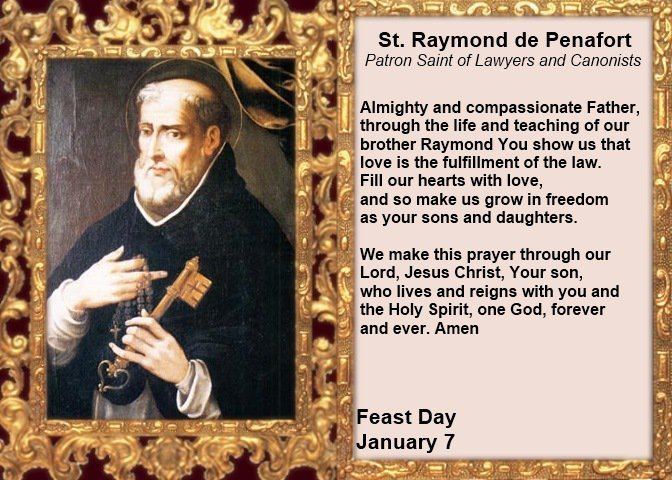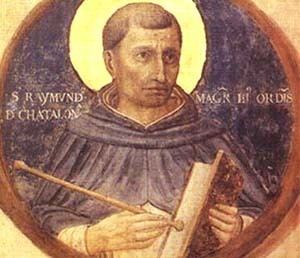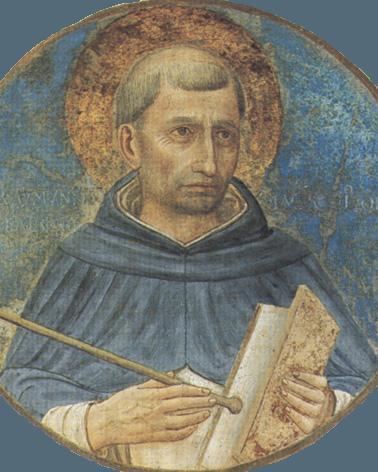Patronage Canon law | Role Saint Name Raymond Penyafort Beatified 1542 | |
 | ||
Similar People Eulalia of Barcelona, Josep Manyanet i Vives, Pacian | ||
St raymond of penyafort fr thumma velangini mana puneethulu 07 jan divyavani tv
Raymond of Penyafort, O.P., (ca. 1175 – 6 January 1275) (Catalan: Sant Ramon de Penyafort, [ˈsan rəˈmon də ˌpɛɲəˈfɔr]; Spanish: San Raimundo de Peñafort) was a Spanish Dominican friar in the 13th century, who compiled the Decretals of Gregory IX, a collection of canon laws that remained a major part of Church law until the 20th century. He is honored as a saint in the Catholic Church and is the patron saint of lawyers, especially canon lawyers.
Contents
- St raymond of penyafort fr thumma velangini mana puneethulu 07 jan divyavani tv
- Daily Saint January 7 StRaymond of Penyafort
- Life
- Mercedarians
- Summa de casibus poenitentiae
- Gregorian Decretals
- Most Famous Miracle
- Later life
- Conversion of Jews and Muslims
- Feast day
- Influence and tribute
- References

Daily Saint January 7 St.Raymond of Penyafort
Life

Raymond of Penyafort was born in Vilafranca del Penedès, a small town near Barcelona, Catalonia, around 1175. Descended from a noble family with ties to the royal house of Aragon, he was educated in Barcelona and at the University of Bologna, where he received doctorates in both civil and canon law. From 1195 to 1210, he taught canon law. In 1210, he moved to Bologna, where he remained until 1222, including three years occupying the Chair of canon law at the university. He came to know the newly founded Dominican Order there. Raymond was attracted to the Dominican Order by the preaching of Blessed Reginald, prior of the Dominicans of Bologna, and received the habit at the age of 47, in the Dominican Convent of Barcelona, to which he had returned from Italy in 1222.
Mercedarians
Raymond was instrumental in the founding of the Mercedarian friars. When approached by Peter Nolasco, Raymond encouraged and assisted him in obtaining the consent of King James I of Aragon for the foundation of the Order.
The need to study oriental languages was affirmed by the General Chapter of the Dominican Order in Paris in 1236. Raymond established the first school of the Studia Linguarum in Tunis, where it was known as the Studium arabicum. The objective of the schools was to help the Dominicans liberate Christian captives in Islamic lands.
Summa de casibus poenitentiae
Raymond had written for confessors a book of cases, the Summa de casibus poenitentiae. More than simply a list of sins and suggested penances, it discussed pertinent doctrines and laws of the Church that pertained to the problem or case brought to the confessor, and is widely considered an authoritative work on the subject.
In 1229 Raymond was appointed theologian and penitentiary to the Cardinal Archbishop of Sabina, John of Abbeville, and was summoned to Rome in 1230 by Pope Gregory IX, who appointed him chaplain and grand penitentiary.
Gregorian Decretals
Knowing Raymond's reputation in the juridical sciences, Gregory IX asked him to help in the rearranging and codifying of canon law. Canon laws, which were previously found scattered in many publications, were to be organized into one set of documents. In particular papal decretal letters had been changing the law over the course of the previous 100 years since the publication of the Decretum of Gratian. Being pleased with Raymond's efforts, the pope announced the new publication in a Bull directed to the doctors and students of Paris and Bologna in September 1234, commanding that the work of Raymond alone should be considered authoritative, and should alone be used in the schools. His collection of canon law, known as the Decretals of Gregory IX, became a standard for almost 700 years. Canon law was finally fully codified by 1917.
Most Famous Miracle
Raymond of Penyafort served as the confessor for King James I of Aragon, who was a loyal son of the Church but allowed his lustful desires to shackle him. While on the island of Majorca to initiate a campaign to help convert the Moors living there, the king brought his mistress with him. Raymond reproved the king and asked him repeatedly to dismiss his concubine. This the king refused to do. Finally, the saint told the king that he could remain with him no longer and made plans to leave for Barcelona. But the king forbade Raymond to leave the island, and threatened punishment to any ship captain who dared to take him. Saint Raymond then said to his Dominican companion, “Soon you will see how the King of heaven will confound the wicked deeds of this early king and provide me with a ship!” They then went down to the seashore where Raymond took off his cappa (the long black cloak the Dominicans wear over the white tunic and scapular), and spread one end of it on the water while rigging the other end to his walking staff. Having thus formed a miniature mast, Raymond bid the other Dominican to hop on, but his companion, lacking the saint’s faith, refused to do so. Then Raymond bid him farewell, and with the sign of the cross he pushed away from the shore and miraculously sailed away on his cloak. Skirting around the very boats that had forbidden him passage, the saint was seen by scores of sailors who shouted in astonishment and urged him on. Raymond sailed the ~160 miles to Barcelona in the space of 6 hours, where his landing was witnessed by a crowd of amazed spectators. Touched by this miracle, King James I renounced his evil ways and thereafter led a good life.
Later life
Having reached his 60th year, Raymond retired to a reclusive life in Barcelona. Within the year, however, Raymond was appointed to the position of Archbishop of Tarragona, the capital of the Kingdom of Aragon, but declined.
Raymond returned to Barcelona in 1236. Not long able to remain in seclusion, however, he was elected the Master of the Order of Preachers by the General Chapter of 1238. He immediately set out on foot to visit all the houses of friars and nuns of the Order. Even in the midst of this, he was able to draft a new set of Constitutions of the Order, in which he included a resignation clause for the Master. When it was adopted by the next General Chapter of 1240, he immediately took advantage of that option and resigned within two years.
Although not an inquisitor, as an advisor to James I of Aragon he was often consulted regarding questions of law regarding the practices of the Inquisition in the king's domains. "...[T]he lawyer's deep sense of justice and equity, combined with the worthy Dominican's sense of compassion, allowed him to steer clear of the excesses that were found elsewhere in the formative years of the inquisitions into heresy." Raymond approved of conjugal visits for those imprisoned so that the spouse should not be exposed to the risk of possible adultery.
Conversion of Jews and Muslims
Rejoicing to see himself again free of office, he applied himself with fresh vigor to the Christian ministry, especially working for the conversion of the Moors. To this end he encouraged Thomas Aquinas to write his work Against the Gentiles. He instituted the teaching of Arabic and Hebrew in several houses of the friars. He also founded priories in Murcia (then still ruled by Arabs) and in Tunis. Additionally he went to help establish the Church in the recently conquered island of Mallorca.
He exercised great influence over King James of Aragon and succeeded in persuading him to order a public debate, concerning Judaism and Christianity, between Moshe ben Nahman, a rabbi in Girona, and Paulus Christiani, a baptized Jew of Montpellier who belonged to the Dominicans. In this debate, which took place in the royal palace at Barcelona from 20–24 July 1263, in the presence of the king and of many of the higher clergy, Raymond took an important part. He was at the head of the theologians present, and in agreement with the king gave the rabbi perfect freedom of speech. Raymond simply observed to Moses ben Nachman that he must not allow himself to blaspheme Christianity, to which Moses replied that he knew what the laws of propriety demanded. On the Jewish Sabbath following the close of the debate, the king, together with many preaching friars and other clergy, visited the synagogue.
Raymond died at the age of 100 in Barcelona in 1275 and was canonized by Pope Clement VIII in 1601. He was buried in the Cathedral of Santa Eulalia in Barcelona.
Feast day
St. Raymond of Peñafort's feast day was inserted in the General Roman Calendar in 1671 for celebration on 23 January. In 1969 it was moved to 7 January, the day after that of his death. He is the patron saint of canon lawyers, specifically, and lawyers, in general, in addition to being the unofficial patron saint of making a superb exit, due to the nature of his most famous miracle.
Influence and tribute
The St. Raymond Peñafort Building in the University of Santo Tomas which houses the College of Commerce and Business Administration and the Faculty of Arts and Letters is named in his honor. St. Raymond's Church and cemetery, both located in the New York City borough of the Bronx were also named in his honor.
